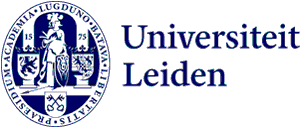
Exhibition encourages us to reflect on the history of slavery
What is the significance of the history of slavery for our present-day society? A special exhibition in the inner courtyard of the Academy Building features eleven insightful portraits of students and staff, and their answer to this question. The aim of the exhibition’s initiators is to make the subject more visible and open to discussion.
Keti Koti is a powerful and personal series of portraits, which suddenly transforms the brick-walled inner courtyard into an intimate setting that inspires reflection. ‘I long for a change, where I’m seen more as an individual person than as an example,’ is the quote that accompanies the portrait of biology student Nalani Verwoord. ‘Living with one another on the basis of truthful history,’ are the words of Lychinta Zichem, adviser planning & control. ‘It’s not the case that we’re simply looking at the past with the standards of the present; even then it was contentious,’ says the quote of Pieter Slaman, university historian.
Learning from the past
For the exhibition, the photographer Kevin Kwee created eleven portraits of students, staff, academics and administrators. Visitors can use the QR code to read the full stories of the people in the portraits on the website. The exhibition is an initiative of the Diversity & Inclusion Expertise Office and runs until 25 June 2025. Project coordinator Fakiha Ahmed is the originator of this project: ‘This exhibition is not just about historical facts, but rather about the racism, discrimination and inequality that we still see today. It’s about daring to make that connection and to talk about the ongoing effects of that history.’
Symbolic heart
University lecturer Aya Ezawa, who until recently was the university’s Diversity Officer, opened the exhibition on 25 June, together with Annetje Ottow, President of the Executive Board. Ezawa explained: ‘With the portraits in the symbolic heart of the university, we literally stop to reflect on the history of slavery. This exhibition encourages us to acknowledge the different perspectives and experiences, and to make the subject open to discussion.’
-
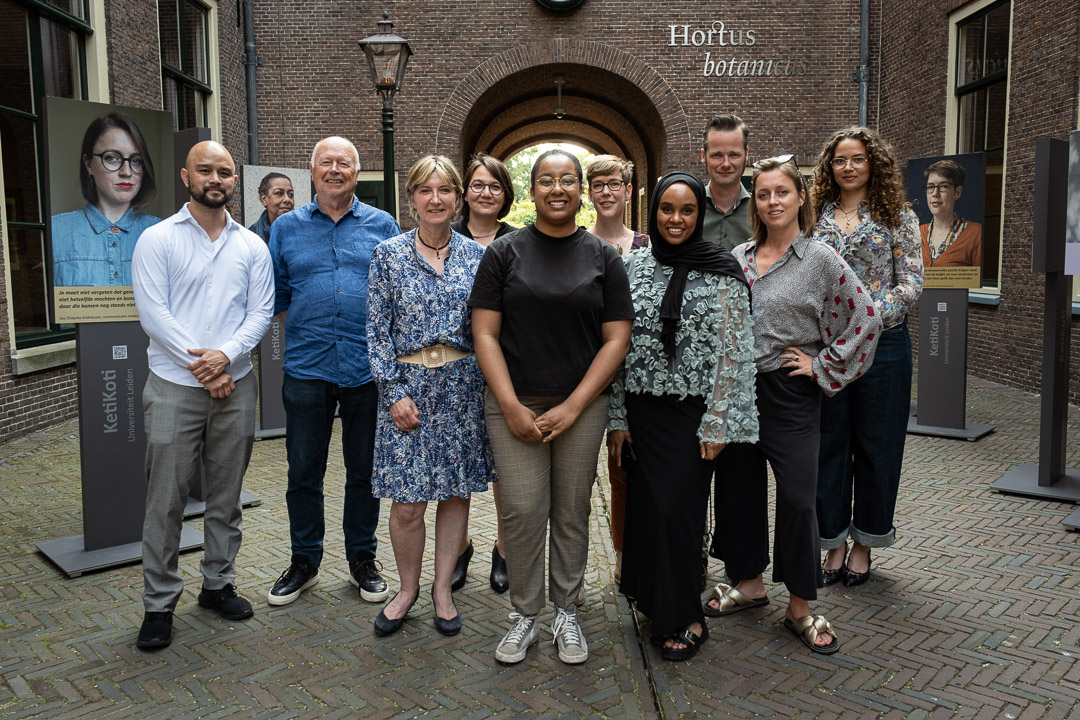
Many of the creators and portrayed individuals were present at the opening. -
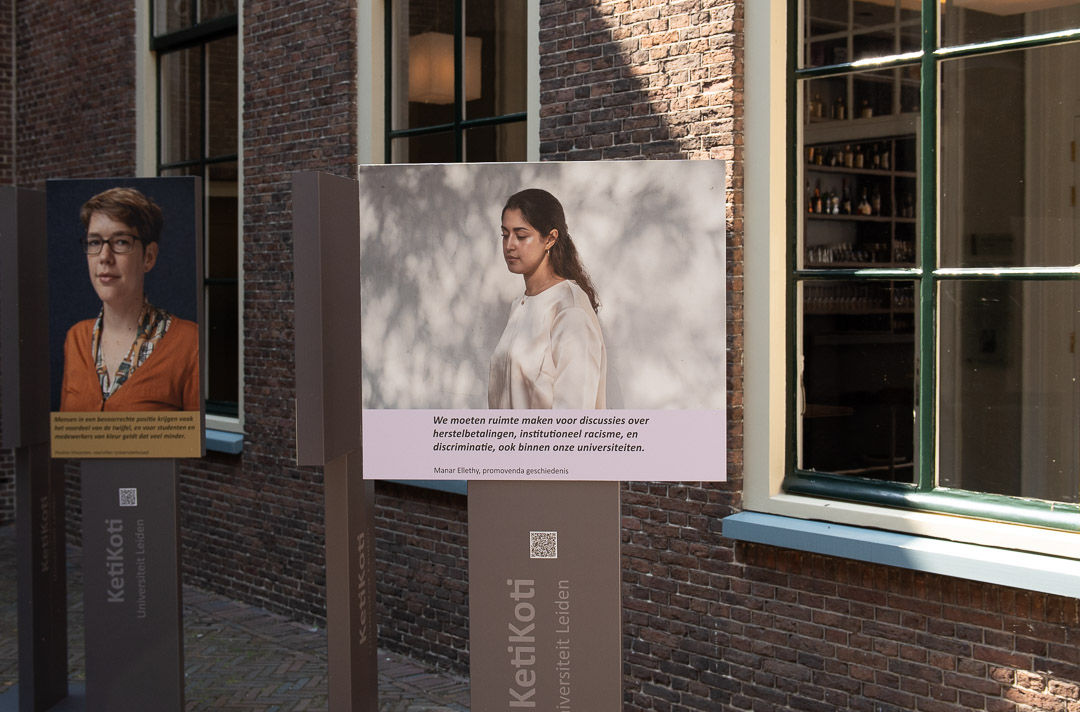
-
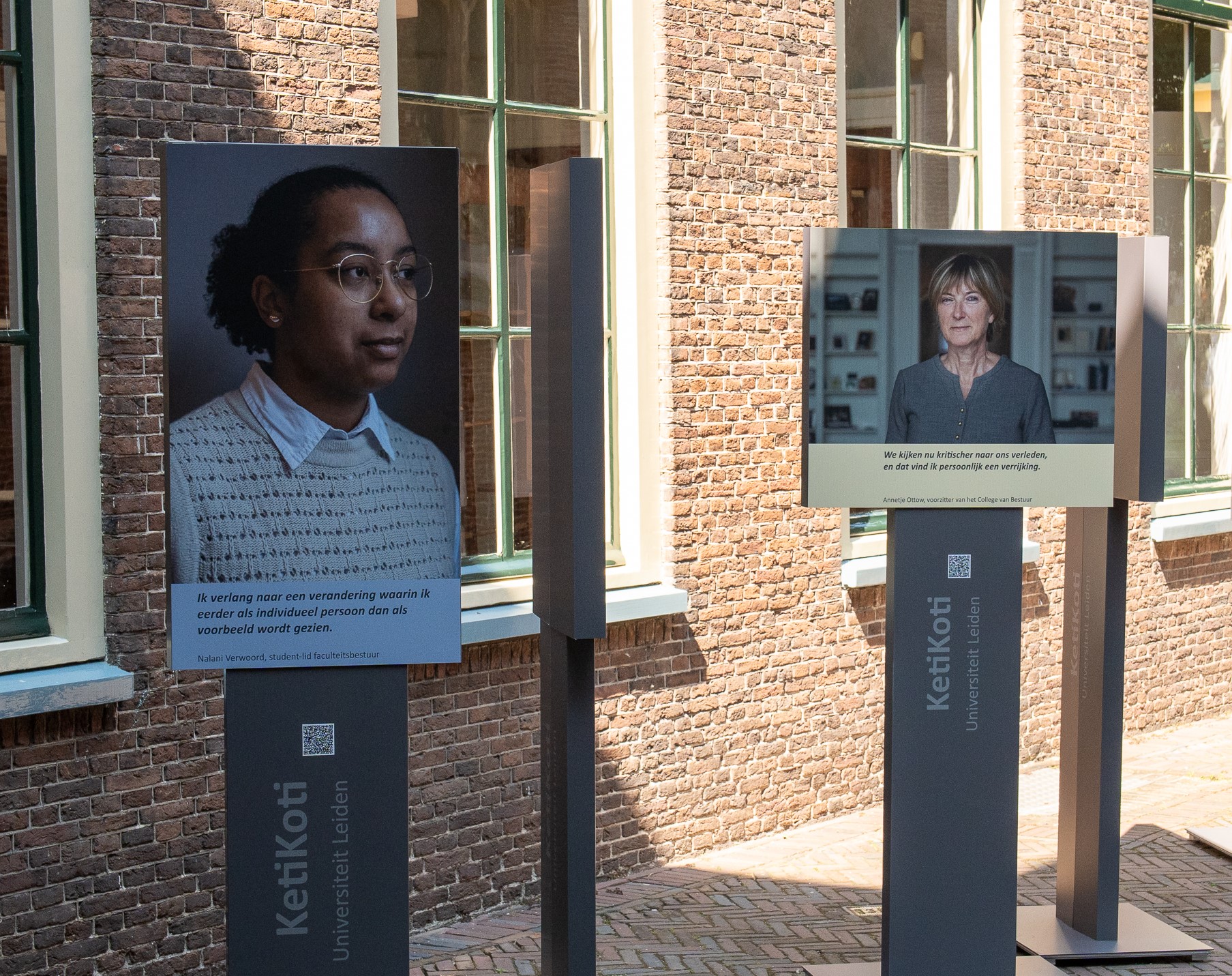
-
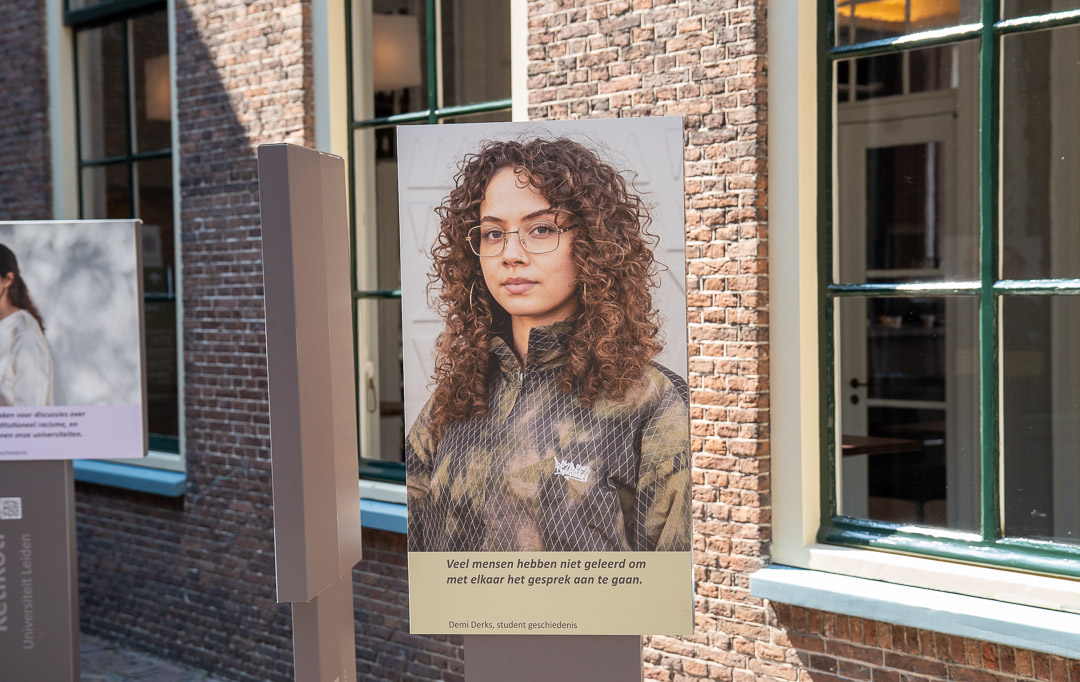
-
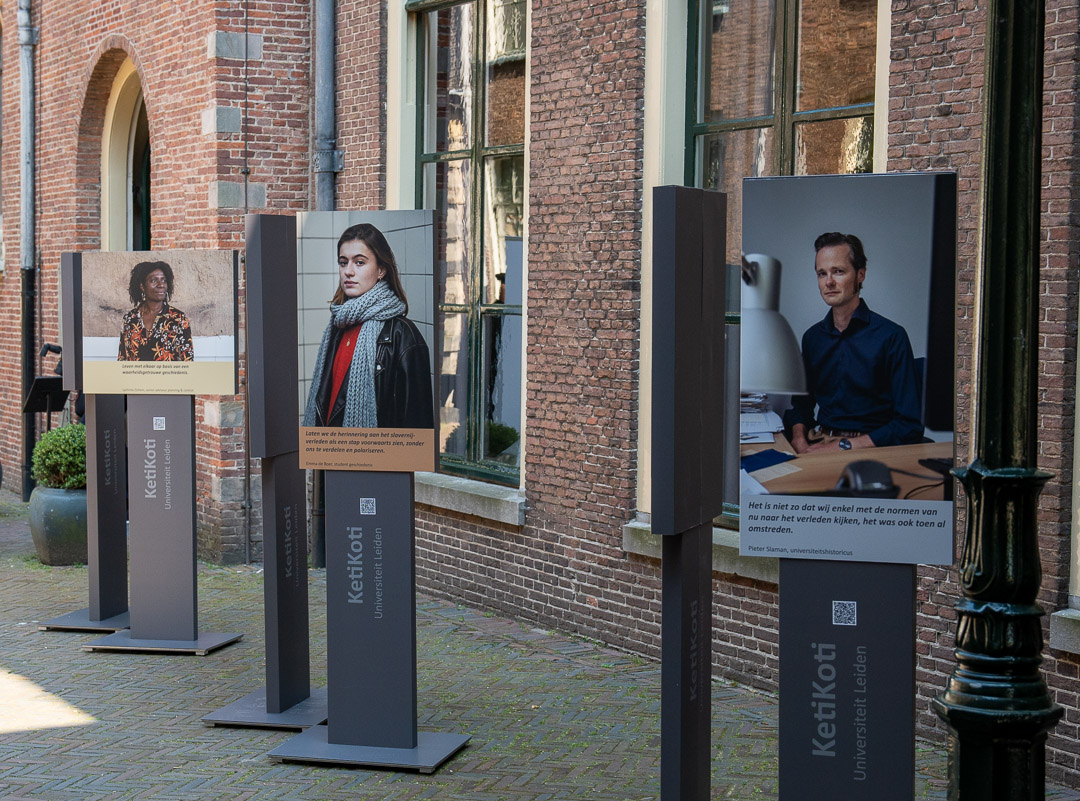
-
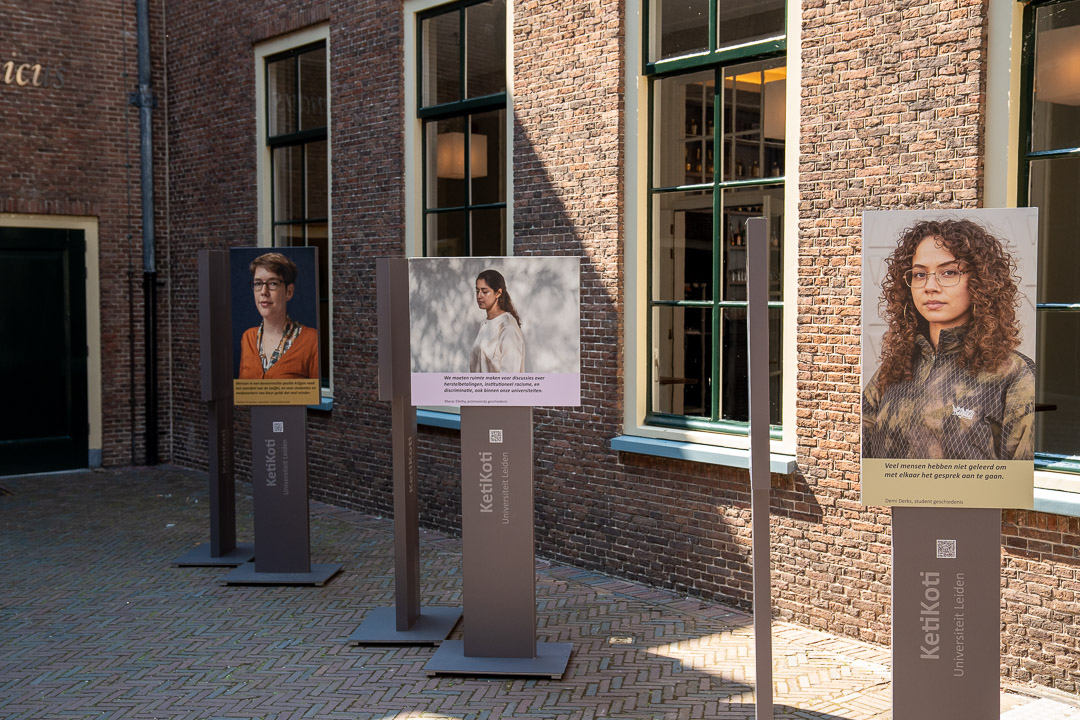
-
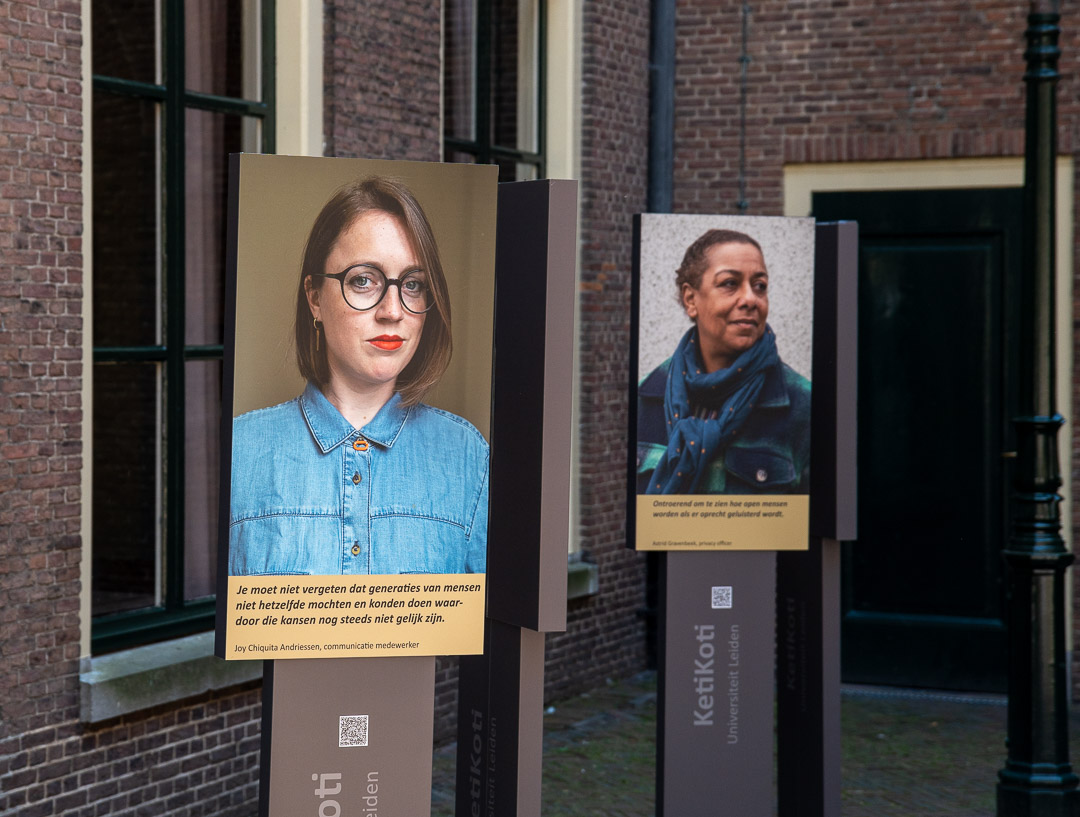
-
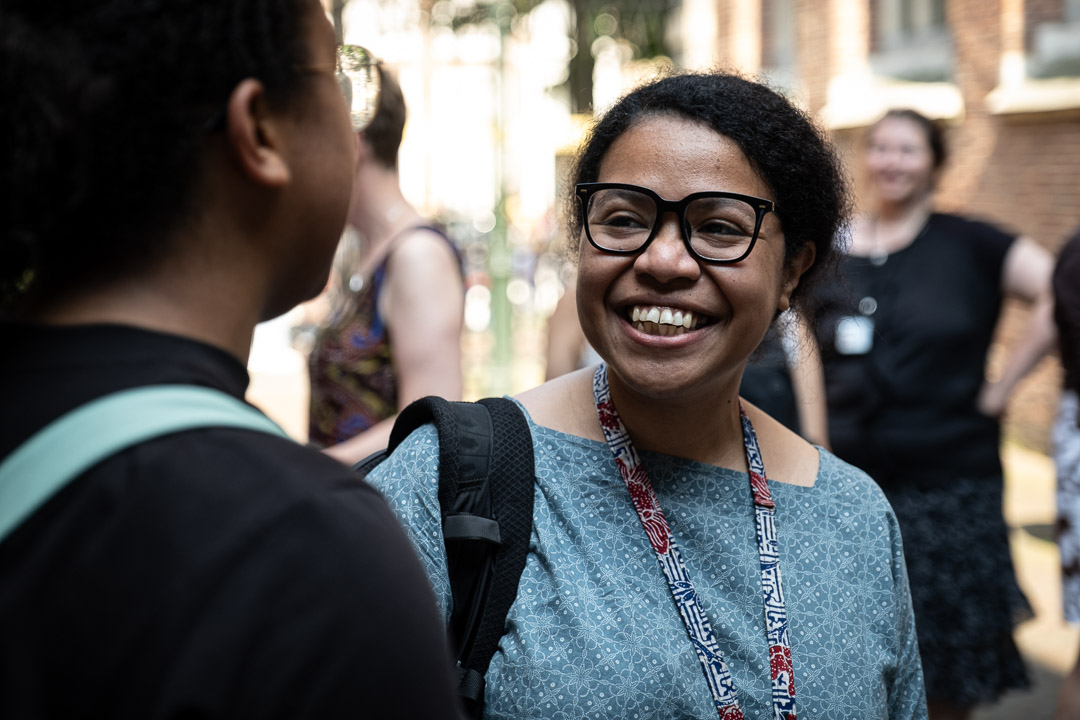
The opening was also attended by historians, such as Ligia Giay, who research the history of colonialism and slavery. -
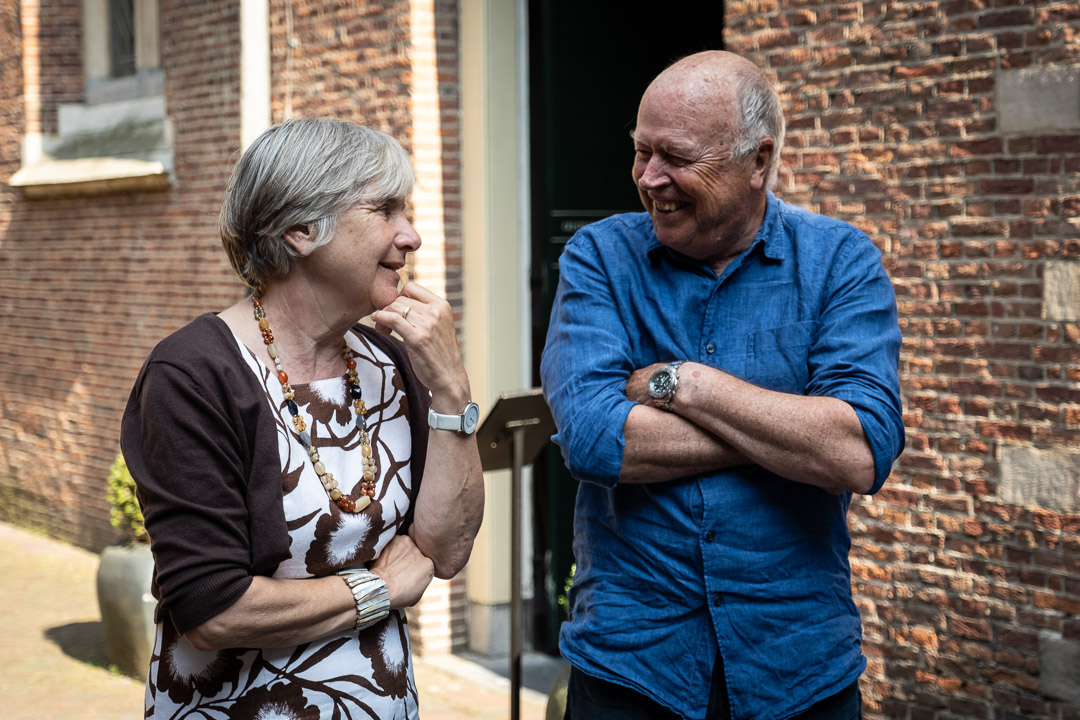
Curator Corrie van Maris and designer Matt van Sandvoord. -
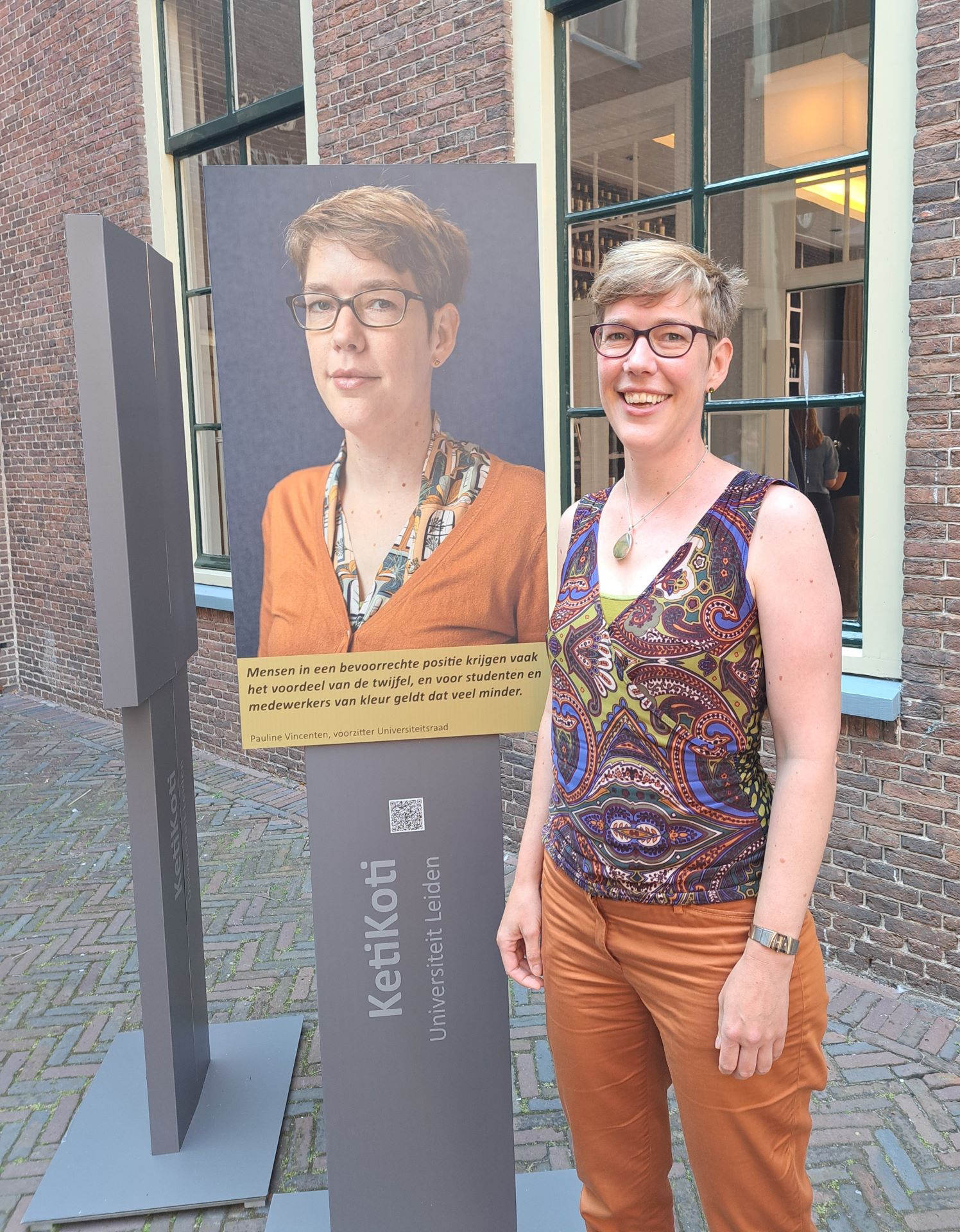
Pauline Vincenten, Chair of the University Council, next to her portrait.
Looking critically at the past
Annetje Ottow then spoke a few words: ‘It’s very moving to see all the portraits in this setting, and it’s good to engage in the conversation with one another in this beautiful, central space within the university.’ Ottow’s own portrait and story are included in the exhibition. On behalf of the Executive Board, she encourages research into the university’s colonial past and history of slavery in many different ways.

Impact of historical slavery on families
Communication specialist Joy Chiquita Andriessen also has her portrait in the exhibition. ‘It’s very special to be standing here next to my own portrait,’ she says at the opening. ‘My mother is half Antillean and is descended from an enslaved woman who gave birth to a child fathered by her owner at the end of the 18th century. Even after the abolition of slavery, that history had a deep impact on our family relationships and upbringing for many generations. Fortunately, my mother was able to break those old patterns. It sometimes annoys me when people say that you shouldn’t get stuck in the past, when they themselves have no difficulties with that past. That kind of remark is caused by ignorance. Hopefully the exhibition in this prominent place can do something to change that.’
Enriching our image
The exhibition includes just one portrait of a man. ‘It wasn’t really a very deliberate decision beforehand to mainly portray women,’ says Ezawa. ‘But we found that women were especially motivated to tell their story here. Most of the paintings in the Academy Building are of male professors and administrators from the past. These new portraits enrich our image of the university community.’
Text: Linda van Putten
Photographs in the article: Kevin Kwee and Rob Dorresteijn
